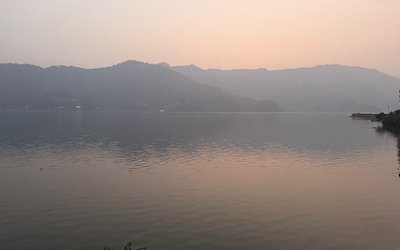In a poem of by-gone days, a river expresses: “Men may come and men may go but I go on forever.”
What is a reality on this earth is that great empires have come and gone during the course of previous centuries. One has only to think of the empires of Darius, Alexander, Ashok, Hannibal, Julius Caesar, Charlemagne, Genghis Khan and Napoleon to realise the truth of the above saying. What was the motive that drove them all? Now we come to the present age:
The recent Scottish referendum decided by a majority of 10% that Scotland will remain a part of the United Kingdom. This was a review of the Union between the two countries has been existent over 300 years.
Many years ago Ernest Renan wrote an essay entitled ‘What is a nation.’ He wrote initially of the small tribes and clans that came together to form centres which in turn became city states, to be later conquered and become part of the Roman Empire. It was the fall of the Roman Empire that led to the formation of countries of Western Europe. Thus communities flourished and then disintegrated to evolve anew. There was no vacuum. Nations came into being as a result of many factors, some peaceful, some violent.
The World War I saw the dismantling of the Austro-Hungarian Empire which had existed from 1867 to 1918 into smaller entities. A Turkish Empire established in 1299 became The Ottoman Empire in 1453 and finally collapsed at the end of World War I in 1918. The idea of a Jewish state which had started towards the end of World War I led to the formation of Israel after World War II.
World War II led to the realignment of the Middle East and the creation of Israel. The conflict of that development is still existent in the hostility between the Jews and the Arabs. The problem of that homeland is still with us. There was the concept of the Big Three (USA, UK & Russia) to stand up to Hitler’s bullying tactics. The Post World War lI scenario which saw the depletion of colonies of Britain, France and even Belgium led to the formation of many new countries in Africa and Asia. That some colonies having dominion status became nations in the UN was probably engineered to counter the Russian block votes. Both Australia and Canada became nations with their own heads of state much later. Though the USSR now has a much reduced size, we are in a world of just two major powers, each trying to outdo the other.
Following the end of World War II, the concept of forming the European Union went ahead by leaps and bounds. The European Union was thought to be entity that would be able to talk on equal terms with USA. The last thirty years however has also seen the breakup of both Yugoslavia and the USSR. The reasons were simple – they were non-cohesive entities that could not be kept together.
The situation in Scotland was watched with interest in many parts of Europe for the reason that it could be the herald of a break-up of regions of Spain, Belgium, France and Italy when the whole concept of the last fifty years has been a united Europe.
A similar scenario in our setting was the conquest of the Rajas and Rajautas of Nepal by Prithivi Narayan Shah to form a new Nepal. Whilst the reign of King Mahendra saw the formation of fourteen Anchals and four regions (later five), he also allowed the existence of the four Rajahs of Bazang, Sallyan, Jajarkot and Mustang.
Following that wave of initiatives of King Birendra and Ziaur Rahman of Bangladesh led to formation of the SAARC fraternity in 1985. There was talk then of visa free travel within the countries and even of a common currency like the Euro. Though SAARC membership as increased with the addition of Afghanistan in 2007, what must be accepted by all its advocates is that this concept has not really flowered. One can only hope that the leadership Narendra Modi in India will bring about some changes. Will the coming SAARC conference be another natak as in the past?
What’s troubling is the recent outburst and the demand by CK Raut that provision should be there for cessation is serious enough. Baburam Bhattaria feels that this is an infringement of the right to speak and Padma Ratna Tuladhar states that this is all in conformity with the Interim Constitution. One is left wondering as to where we are headed. If this is the line of thinking in the Terai, then the very existence of Nepal is in doubt.
With the objective of devolution of power to local level, many of the aspirations of the people are likely to be met. The question of how to have a federal set up of the country has been plaguing our parliamentarians for well nigh 4 + 1 years. Should it be single or multiple ethnicities, sustainable viability and what not? We seem to be in a morass with no visible solution in sight.
What hopefully will be a trendsetter of the Scottish referendum is the 85% voter turnout, comprising of one lakh of over 16 years first time voters and the mass involvement of women. Kamal Thapa’s demand for referendum on important issues should perhaps be looked at more carefully.

Hemang Dixit
The author writes fiction under the name of Mani Dixit. Website: www.hdixit.org.np. Twitter: @manidixithd
- Top Heavy
- Sep 20, 2023
- Most Able?
- Sep 04, 2023
- Changing Times
- Aug 21, 2023
- Nepali Shenanigans
- Aug 03, 2023
- Budget Naataks
- Jun 29, 2023












